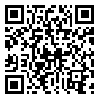BibTeX | RIS | EndNote | Medlars | ProCite | Reference Manager | RefWorks
Send citation to:
URL: http://hayat.tums.ac.ir/article-1-41-en.html
2- MSc. in Biostatistics, Dept. of Biostatistics, School of Management and Information Technology, Tehran University of Medical Sciences, Tehran, Iran
Background & Aim: Pain can detrimentally affect physical functioning, psychological well-being and social interaction. Various attitudinal factors may be associated with inadequate pain control. Hence, studies should be undertaken to gain a better understanding of association between pain control attitudes and use of analgesics and cancer pain intensity. This study aimed to determine relationship between pain control attitudes and use of analgesics and pain intensity in cancer patients with pain.
Methods & Materials: A descriptive cross-sectional study was conducted with 200 cancer patients who underwent chemotherapy or radiotherapy and experienced pain in previous 24 hours. The pain control attitudes, use of analgesics, worrisome about using analgesics and physical and psychological impacts of pain were measured using questionnaires. The cancer pain intensity was measured using the visual analogue scale. Validity and reliability of the instruments were evaluated. Data were analyzed using independent t-test and ANOVA.
Results: About 58% of patients agreed that they would wait before asking for help. Beside, the findings indicated that willing to tolerate pain and perceived control over pain were associated with the time and frequency of taking analgesic and pain intensity in previous 24 hours and last week. Also concerns about addiction to pain-relieving medications were related to the analgesic type and pain intensity within last week (P=0.03), and fear of injection was related to analgesic use and pain intensity within last week (P<0.001).
Conclusion: Many cancer patients had attitudes which could interfere with pain relieving. Suggestions are made for developing patient education programs, accessing effective cancer pain controls and decision making for cancer pain relief.
| Rights and permissions | |
 |
This work is licensed under a Creative Commons Attribution-NonCommercial 4.0 International License. |





